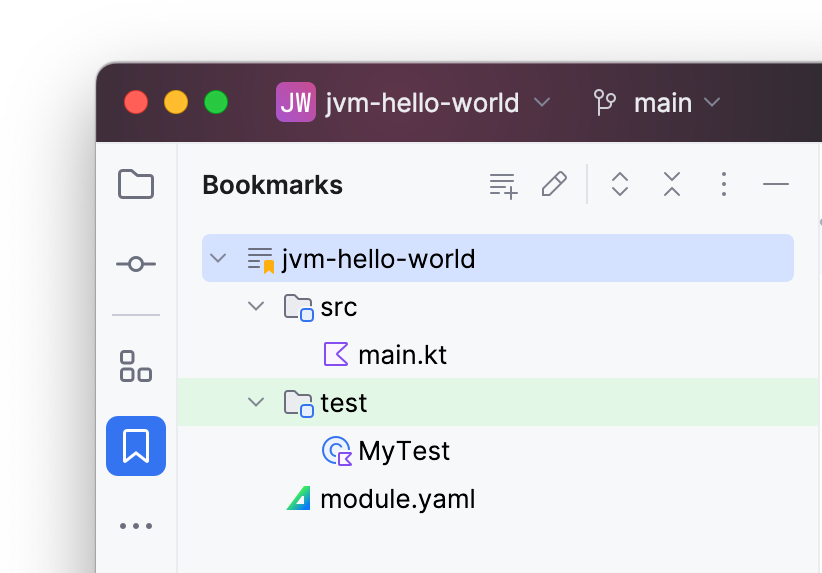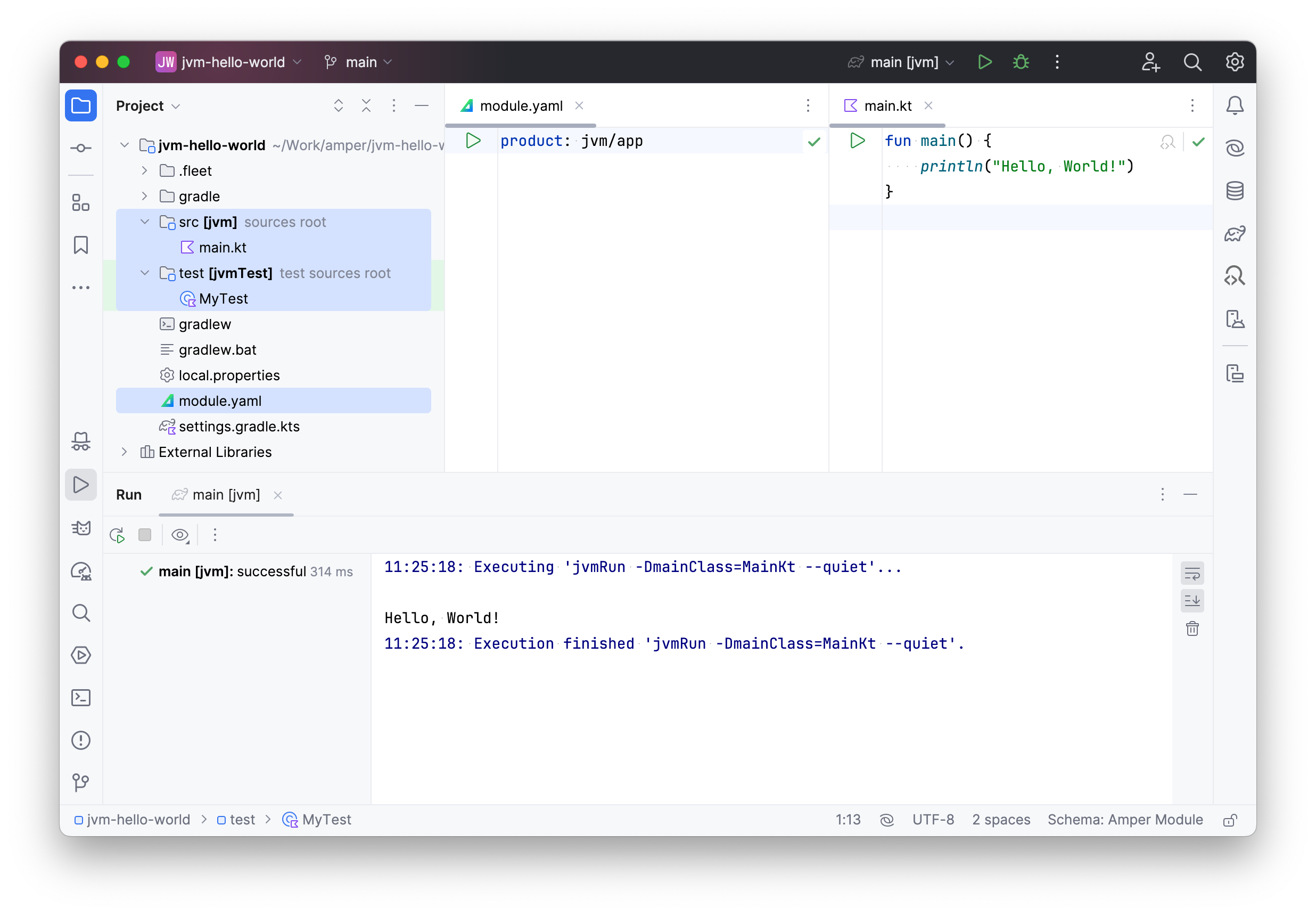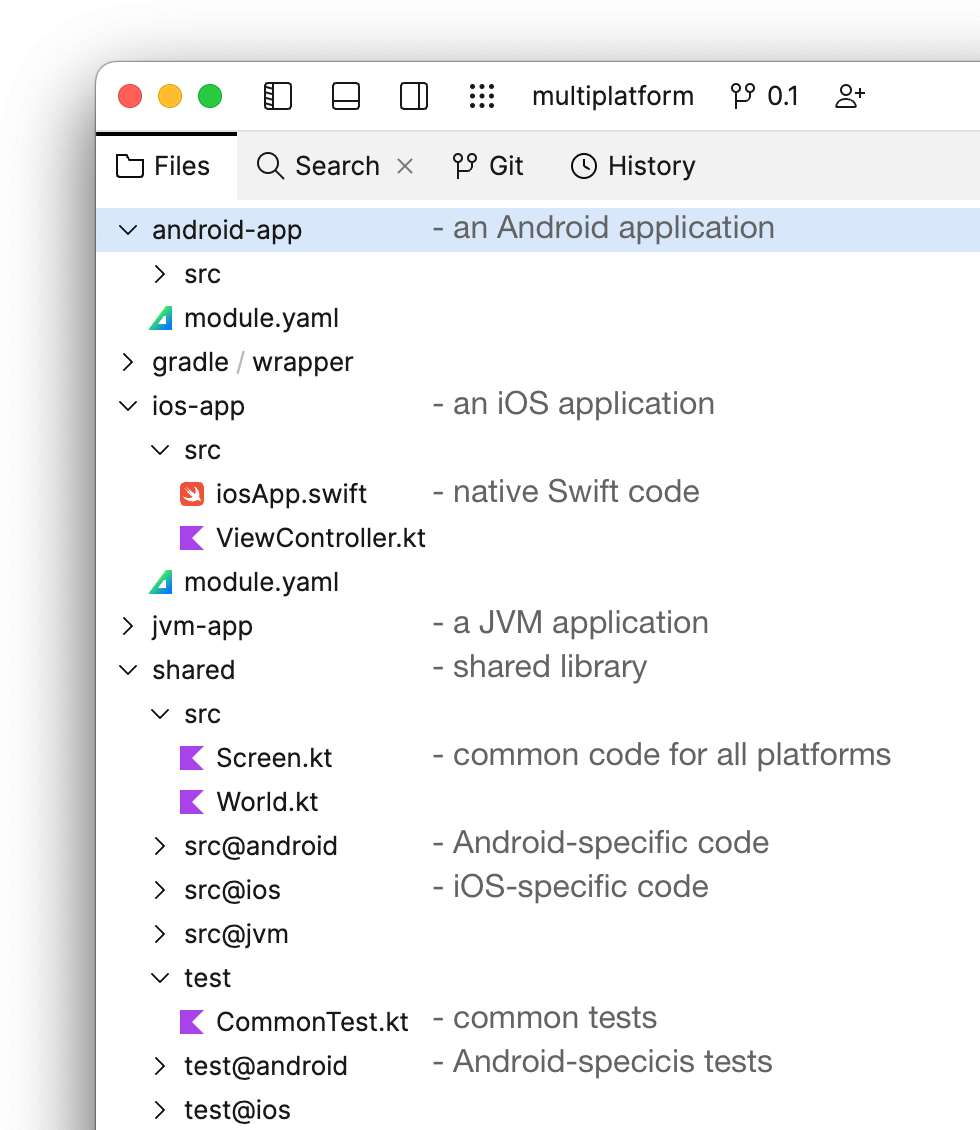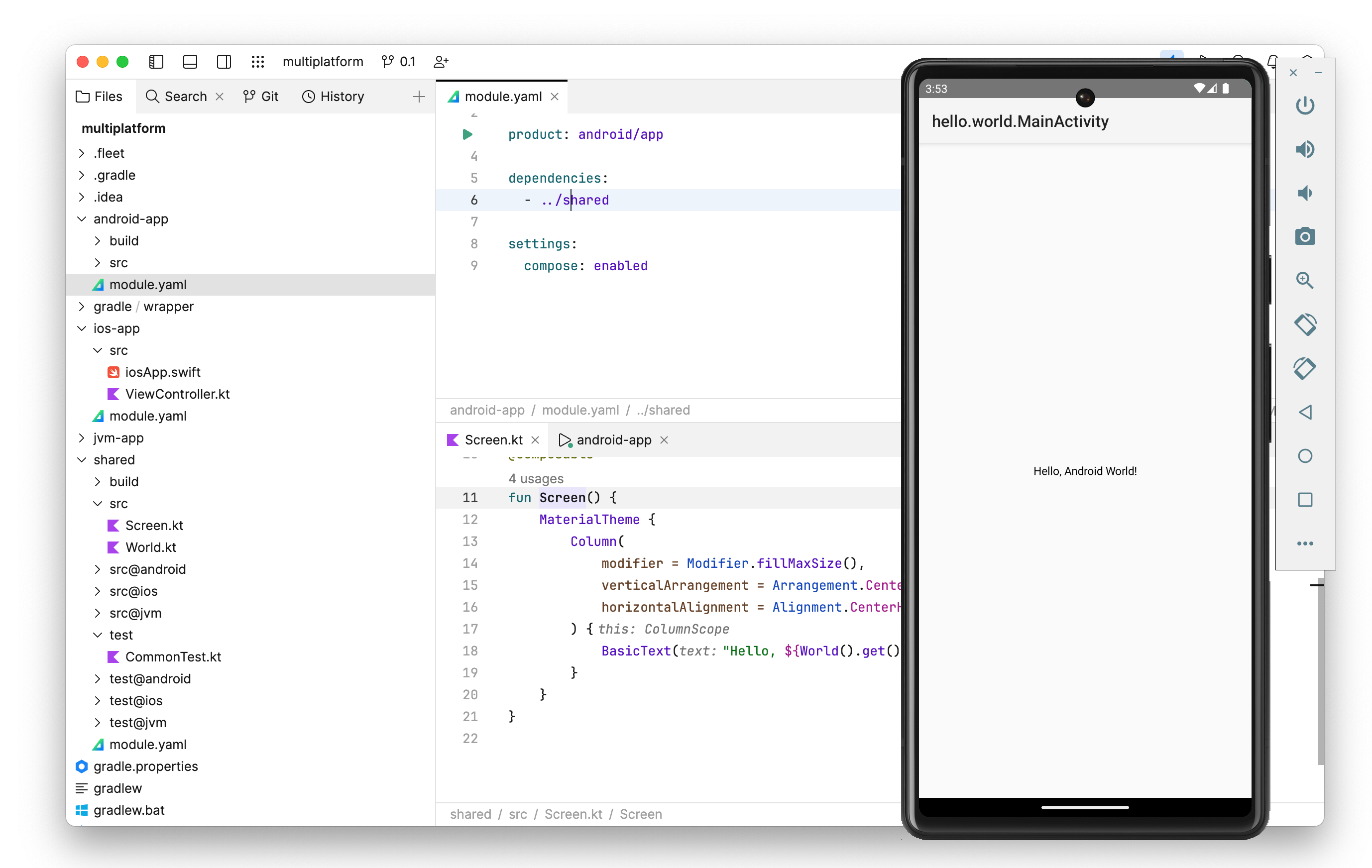Amper is a project configuration and build tool. Its goal is to provide a great and smooth user experience and IDE support We believe that this can be achieved by:
- providing a developer- and IDE-friendly declarative configuration DSL - to simplify not only the initial setup but also improve maintainability and let an IDE assist with automatic configuration reliably;
- bundling a curated set of compatible toolchains and extensions - to support the majority of the scenarios without the need to find compatible plugins;
- carefully choosing the extensibility points - to keep the overall mental model and UX of the configuration consistent and to avoid unexpected third-party code execution.
In essence, we aim to achieve a similar well-thought-out and well-tested experience as with JetBrains IDEs.
We’re currently looking at various aspects, including the configuration of projects for building, packaging, publishing, and more. At the current stage, however, the focus is primarily on configuring projects for building. While the current use case is Kotlin and Kotlin Multiplatform, Amper also supports Java and Swift (as a requirement for multiplatform). However, the same approach to configuration could work for other languages and technology stacks in the future.
Amper exists as a standalone build tool as well as a Gradle plugin for existing Gradle-based projects. Both versions offer a unified, easy-to-use, declarative configuration format.
Supported features:
- Creating and running JVM, Android, iOS, Linux, and macOS applications.
- Creating Kotlin Multiplatform libraries.
- Running tests.
- Mixing Kotlin, Java and Swift code.
- Code assistance for module files in IntelliJ IDEA and Fleet.
- Multi-module projects.
- Using Compose Multiplatform.
- Using Compose multiplatform resources*.
- Gradle interop, including combining Amper and Gradle modules in one project*.
- Integration with Gradle version catalogs*.
- Gradle-compatible project layout for the smooth migration of existing Gradle projects*.
* only in Gradle-based projects
Future directions:
- Support for more Kotlin and Kotlin Multiplatform scenarios and configurations.
- More product types and platforms, such as watchOS, Windows, etc.
- Platform-specific test types, including android instrumented tests.
- Native dependencies support, such as CocoaPods, Swift Package Manager.
- Packaging and publication.
- Build variants support.
- Extensibility.
For a quick start:
- Setup and usage instructions
- Tutorial
- Documentation
- Example projects
- Gradle migration guide
Amper uses YouTrack for issue tracking, create a new issue there to report problems or submit ideas.
Before reporting an issue, please check the FAQ.
You can also join the Slack channel for discussions, or share your feedback using the feedback form.
There are multiple ways to try Amper:
- In the latest IntelliJ IDEA EAP, for JVM and Android projects (instructions).
- In the latest JetBrains Fleet, for the JVM, Android, and Multiplatform projects (instructions).
- Using standalone Amper from the command line.
- Using Gradle-Based Amper from the command line to build Gradle-based Amper projects.
Here is a very basic JVM "Hello, World!" project:
The main.kt and MyTest.kt files are just regular Kotlin files with nothing special in them. The interesting part is module.yaml, which is the Amper module configuration file. For the above project structure, it would simply be:
# Produce a JVM application
product: jvm/appThat's it. The Kotlin and Java toolchains, test framework, and other necessary functionality are configured and available straight out of the box. You can build it, run it, write and run tests, and more. For more detailed information, check out the full example.
Now, let's look at a Compose Multiplatform project with Android, iOS, and desktop JVM apps, with the following project structure in Fleet:
Notice how the src/ folder contains Kotlin and Swift code together. It could, of course, also be Kotlin and Java.
Another aspect to highlight is the shared module with the common code in the src folder and the platform-specific code folders src@ios and src@android (learn more about project layout).
Here is how ios-app/module.yaml file looks:
# Produce an iOS application
product: ios/app
# Depend on the shared library module:
dependencies:
- ../shared
settings:
# Enable the Compose Multiplatform framework
compose: enabledThis is pretty straightforward: It defines an iOS application with a dependency on a shared module and enables the Compose Multiplatform framework. A more interesting example would be shared/module.yaml:
# Produce a shared library for the JVM, Android, and iOS platforms:
product:
type: lib
platforms: [jvm, android, iosArm64, iosSimulatorArm64, iosX64]
# Shared Compose dependencies:
dependencies:
- $compose.foundation: exported
- $compose.material3: exported
# Android-only dependencies
dependencies@android:
# Android-specific integration with Compose
- androidx.activity:activity-compose:1.7.2: exported
- androidx.appcompat:appcompat:1.6.1: exported
# iOS-only dependencies with a dependency on a CocoaPod (not yet implemented)
dependencies@ios:
- pod: 'Alamofire'
version: '~> 2.0.1'
settings:
# Enable Kotlin serialization
kotlin:
serialization: json
# Enable the Compose Multiplatform framework
compose: enabledA couple of things are worth mentioning. First, note the platform-specific dependencies: sections with the @<platform> qualifier. The platform qualifier can be used both in the manifest and also in the file layout. The qualifier organizes the code, dependencies, and settings for a certain platform.
Second, the dependencies: section allows not only Kotlin and Maven dependencies, but also platform-specific package managers, such as CocoaPods, Swift Package Manager, and others.
Naturally, these examples show only a limited set of Amper features. To get more insight into design and functionality, look at the documentation, the tutorial, and example projects.
Check our these example projects:
- JVM "Hello, World!" (standalone, Gradle-based)
- Compose Multiplatform (standalone, Gradle-based)
- Compose on iOS (standalone, Gradle-based), Android (standalone, Gradle-based), and desktop (standalone, Gradle-based)
- Kotlin Multiplatform app template with shared Compose UI and with native Android and iOS UI
- Gradle interop in the Gradle-based Amper
- And other standalone and Gradle-based examples





